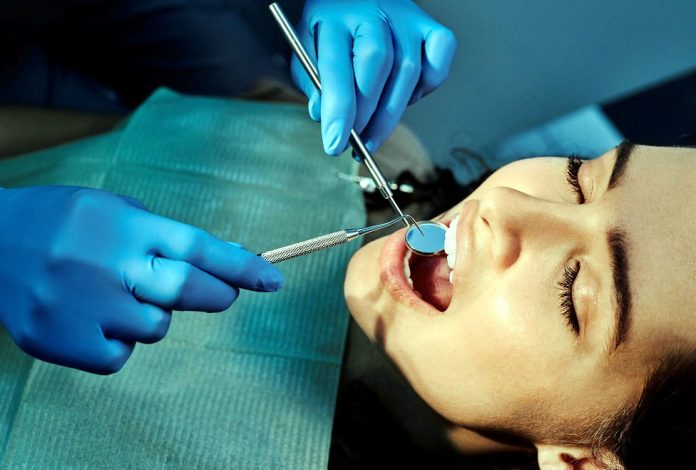Dr Amanjot Kaur, Dr Saurabh K Gupta, Dr Karthik S
Early oral cancer prevention and timely diagnosis of premalignant oral lesions play a crucial role in reducing cancer-related mortality. By identifying and managing potentially malignant disorders at an early stage, the risk of progression to cancer can be significantly minimized.
Importance Of Early Detection
Early detection of oral premalignant lesions improves prognosis and enhances treatment outcomes. Premalignant lesions, also known as potentially malignant disorders (PMDs), include leukoplakia (white lesions), erythroplakia (red lesions), oral submucous fibrosis (decreased mouth opening due to oral mucosal fibrosis), and oral lichen planus(lacy white, purplish lesions). Identifying these conditions through regular screenings can help in timely medical or surgical intervention.
Risk Factors For Premalignant Lesions
* Tobacco consumption, including smoking and smokeless tobacco use.
* Excessive alcohol consumption, which acts synergistically with tobacco, increases cancer risk.
* Areca nut chewing contributes to oral submucous fibrosis.
* Persistent viral infections such as Human Papillomavirus (HPV).
* Chronic irritation from sharp teeth or ill-fitting dentures.
* Genetic predisposition and family history of cancer.
* Poor oral hygiene and nutritional deficiencies, particularly of iron and vitamin A.
* Smoking Versus Smokeless Tobacco (Chewing Tobacco)
India, along with many South Asian Countries, faces a dual burden of tobacco use in the form of smoking (cigarettes, cigars, bidis, hookah, etc.) and smokeless tobacco (gutka, khaini, zarda, betel quid, mava, tombak, etc.). Smokeless tobacco is usually an umbrella term that usually contains a mixture of products, including certain cancer-causing chemicals. The recent upsurge of e-cigarettes, a non-combustible tobacco product that is usually flavoured, creates an aerosol that the user inhales.
Tobacco And Oral Health
Smoking, including the use of e-cigarettes, has already been proven to cause cardiovascular and pulmonary diseases, low birth weight, and stillbirths due to alteration of the functional, structural and immunologic host defenses. When exposed to tobacco, saliva’s behaviour is reversed, and saliva loses its antioxidant capacity. Smokeless tobacco delivers about 3-4 times more nicotine than smoked tobacco, and this stays in contact with oral mucosa or tissue that penetrates the body, causing localized mucosal changes starting with roughness and erythema. Use of tobacco can cause widespread adverse oral effects, from benign to life-threatening diseases including tooth staining, bad breath, gingival recession, periodontal disease, premature tooth loss, impaired healing following periodontal therapy or extractions, mucosal lesions like smoker’s palate or smoker’s melanosis, reduced salivary flow, potentially malignant disorders like leukoplakia, Erythroplakia, Oral submucous fibrosis and at the worst case scenario- oral cancer. One-third of the oral cancer-related mortality in the world is attributed to the smoking of tobacco. However, smokeless tobacco poses a major risk factor, mainly in Asia and Africa.
Warning signs of Premalignant or Precancerous Lesions seek medical attention if any of the following symptoms persist:
* White or red patches in the oral cavity (leukoplakia or erythroplakia).
* Non-healing ulcers in the mouth lasting more than two weeks.
* Persistent burning sensation in the mouth.
* Progressive difficulty in mouth opening or a feeling of stiffness.
*Recurrent sores, lumps, or thickened areas in the oral cavity.
* Sudden tooth mobility, loss of taste, or unexplained pain.
* Chronic sore throat, hoarseness, or difficulty swallowing.
Strategies for Cancer Prevention
Tobacco and Alcohol Cessation: Quitting tobacco and alcohol is the most significant step in cancer prevention. Behavioural counselling and pharmacotherapy, such as nicotine replacement therapy, can aid cessation.
Regular Oral Screenings: Routine dental and medical check-ups help in the early detection of suspicious lesions.
HPV Vaccination: Immunization against HPV can significantly lower the risk of virus-associated malignancies.
Nutritional Interventions: A diet rich in antioxidants, fruits, and vegetables can play a protective role in reducing oxidative stress and inflammation.
Maintaining Good Oral Hygiene: Regular brushing, flossing, and dental visits prevent infections and chronic irritation.
Protection Against Chronic Irritants: Avoiding prolonged exposure to betel nuts, spicy foods, and sharp teeth/denture-induced trauma can help reduce the risk.
Avoidance of Excessive Sun Exposure: Proper lip protection using sunscreen or lip balms can prevent actinic keratosis, a precursor to lip cancer.
Oral cancer prevention is achievable through the collective efforts of individuals, healthcare professionals, and policymakers. Awareness of premalignant conditions and their timely diagnosis can significantly reduce cancer-related mortality. As Joseph E. Pizzorno rightly stated, “Half the costs of illness are wasted on conditions that could be prevented.” By prioritizing prevention, early detection, and lifestyle modifications, we can combat the devastating impact of oral cancer effectively.
(The authors are from AIIMS, Jammu)
Trending Now
E-Paper


